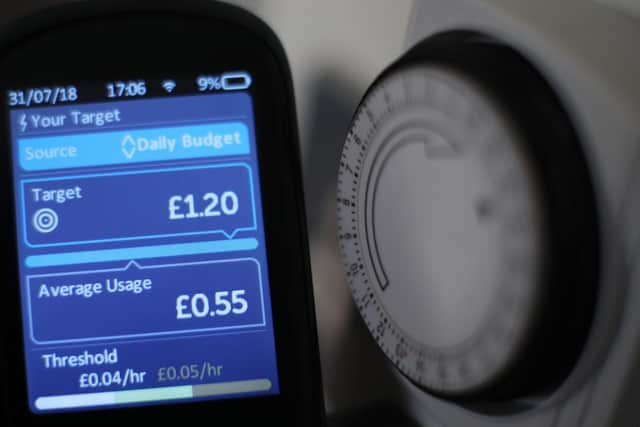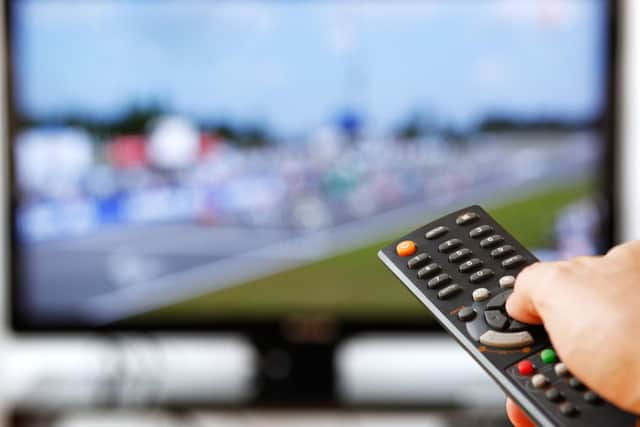How smart meters can cut e-waste mountain and climate crisis – Robert Goodwill
Some products, such as incandescent light bulbs, have been consigned to the dustbin of history.
Similarly the ubiquitous red “stand by” light has either been eliminated completely or replaced with an LED equivalent.
Advertisement
Hide AdAdvertisement
Hide AdThe shoddiest, least-efficient products are no longer on the UK market and eco-labelling has helped us all make more informed choices.


The Smart Meter “grasses up” the children when they leave TVs and computers on upstairs.
The most conservative estimate suggests we have already prevented eight million metric tonnes of CO2 equivalent (MtCO2e) being emitted in the UK a year.
It has also benefited consumers, giving us access to higher-quality goods and saving the average UK household at least £100 on their annual energy bills.
Advertisement
Hide AdAdvertisement
Hide AdLeaving the EU means that we no longer need to move at the speed of the slowest as we strive to make further progress.


The recent Green Alliance report is a useful signpost to guide us down the right track that could leave our EU neighbours spinning in our wake. They make some key recommendations.
Existing standards must be properly enforced. Up to a quarter of some types of product can slip through the net – particularly when sales are online.
Not only does that mean the UK is missing out on savings that would be the equivalent of taking 600,000 cars off the road but these products can often be not only unsafe but impossible to repair. More on that later.
Advertisement
Hide AdAdvertisement
Hide AdEnergy labelling can be confusing. As fridges and TVs get larger and larger, the size of the appliance can outweigh the efficiency stated on the label.


A massive A+ rated flat-screen TV can use 10 times as much power as a smaller set with the same rating. This could amount to the difference between £3.88 and £39.52 annual cost for a family, according to the Green Alliance.
The House of Commons Environmental Audit Committee has highlighted the problem of the e-waste mountain.
We have a massive volume of redundant electrical and electronic equipment in almost every home. This was often referred to as the “Amstrad in the attic” when, as an MEP, I was involved in drafting the original WEEE (Waste Electrical and Electronic Equipment) Directive.
Advertisement
Hide AdAdvertisement
Hide AdThe situation is worse for products like smartphones, where the bulk of environmental impact is caused by production rather than use and the incessant launch of new versions means functioning devices are replaced long before they wear out.
PwC have found that producing 75g of metals for a typical smartphone requires at least 6.49 kg of ore to be mined.
This also results in 60kg of CO2 equivalent, which is more than 300 times the weight of the phone itself.
I agree with the Green Alliance when they say the quality and environmental impact of products would be significantly improved by setting specific standards targeted at slowing down the churn of electronic products.
Advertisement
Hide AdAdvertisement
Hide AdCriteria should include durability, “upgradeabilty”, component reuse and (my own bugbear) repairability, as well as recycled and critical raw material content.
New “product passports” could be used to record this information, along with repair options, chemical composition and social and environmental information.
These digital records of products would be very popular with the public, meeting the desire for clearer information and longer-lasting products.
They would help businesses to create a more circular economy, where high quality, responsibly designed products are kept in use for as long as possible.
Advertisement
Hide AdAdvertisement
Hide AdFinally, I am still trying to find what the greenest option is for my own 21-year-old Sony cathode-ray tube TV.
It stubbornly refuses to break down but would it be greener to repay its loyal service by keeping until it finally expires surrounded by my devoted family or send it to Dignitas for a humane euthanasia?
That would usher in a new era of energy-efficient flat-screen viewing. Suggestions on the back of an envelope, please!
Support The Yorkshire Post and become a subscriber today. Your subscription will help us to continue to bring quality news to the people of Yorkshire. In return, you’ll see fewer ads on site, get free access to our app and receive exclusive members-only offers. Click here to subscribe.
Comment Guidelines
National World encourages reader discussion on our stories. User feedback, insights and back-and-forth exchanges add a rich layer of context to reporting. Please review our Community Guidelines before commenting.